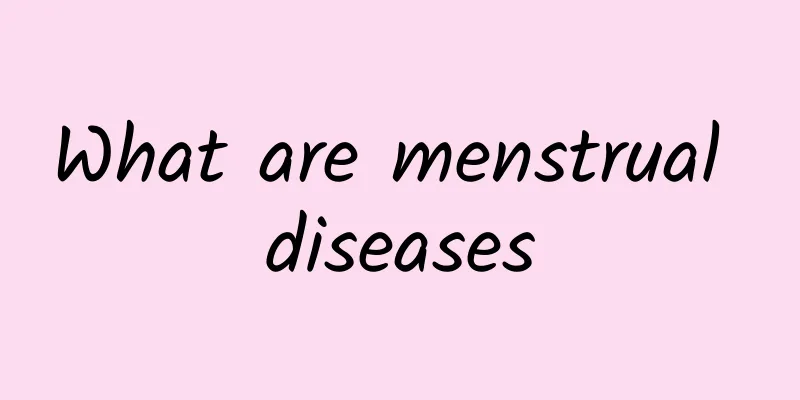What are the specific types of ovarian cysts?

|
What are the specific types of ovarian cysts? Ovarian cysts are common in women's ovaries. Most cysts are caused by changes in the normal function of the ovaries, so most ovarian cysts are benign. So what are the specific types of ovarian cysts? Let our experts introduce them to you in detail. Types of ovarian cysts 1. Functional cysts: This is the most common cyst. It occurs in women of childbearing age during the ovulation cycle. An abnormal amount of fluid accumulates in the follicle or corpus luteum, forming a follicular cyst or corpus luteum cyst. This functional cyst can sometimes be very large, but regardless of medication or not, it usually disappears on its own within three months. Types of ovarian cysts 2. Hemorrhagic cysts: Sometimes follicular cysts and corpus luteum cysts grow too fast, causing the ovarian tissue to tear and bleed. The blood accumulates in the ovary because there is no outlet, which is called a hemorrhagic cyst. This type of cyst usually disappears on its own, but it takes a long time. If the physical discomfort is more obvious, you can take medicine to alleviate the symptoms. Only in a few cases, when the patient presents more serious symptoms, surgery is required. Type 3 of ovarian cysts: Serous epithelial cysts and mucinous epithelial cysts: After three months of observation, cysts that still exist may be epithelial ovarian cysts rather than functional cysts. This is because serous cells and mucinous cells with secretory functions are buried in the ovaries after ovulation, and continuously secrete fluid to form cysts. This type of cyst will not disappear and needs to be removed surgically. Type 4 of ovarian cysts: Chocolate cysts (endometriosis): Endometriosis grows in the ovaries, forming a large amount of sticky coffee-colored liquid that looks like chocolate. Because endometriosis will grow larger over time, it will gradually erode normal tissues and cause irreversible damage to ovarian tissues. After evaluating its severity, surgery may be required. Types of ovarian cysts 5. Teratoma: This is a very special cyst. It may be caused by a problem with cell differentiation during the embryonic period, which takes a long time to manifest. It will form a collection of hair, teeth, and some oils in the ovary. Since the teratoma itself will not disappear on its own and may continue to grow, and there is a 15% chance of causing ovarian torsion, it is best to remove it early. Generally speaking, the rate of malignancy is less than one in a thousand. Types of ovarian cysts 6. Ovarian cancer: The chance of developing ovarian cancer is quite low, but because it is located in the pelvic cavity, it is not easy to detect early. There are many types of ovarian malignant tumors, and their prognosis varies. Generally speaking, middle-aged and elderly women are more likely to get epithelial cell cancer, which has a higher chance of recurrence and a poorer prognosis. Types of ovarian cysts 7. Endometrioid tumors have a smooth surface and are often unilocular. The inner wall is composed of a layer of tall columnar epithelium that is very similar to the endometrium. The surrounding connective tissue lacks endometrial stroma, and there is no bleeding inside or outside the cyst. The above is an introduction to the types of ovarian cysts. Experts have introduced their symptoms accordingly. I believe you have learned something about them and hope it will be helpful to you. If you have other questions about ovarian cysts, please consult our online experts or call our consultation hotline. Experts will answer your questions in detail. Feihua Health Network wishes you good health! Ovarian cysts http://www..com.cn/fuke/ncnn/ |
<<: Experts introduce you to the two major hazards of ovarian cysts
>>: What are the causes of ovarian cysts?
Recommend
Reflection after miscarriage treatment
Abortion is very harmful to women. If you don'...
People and dogs eat together! Homemade vegetable beef soup for a satisfying meal
This series of fresh recipes will feature colorfu...
Will pelvic effusion cause frequent urination?
Pathological pelvic effusion is the presence of i...
What is perimenopausal syndrome
Perimenopausal syndrome is commonly known as meno...
How to lose weight if you have lower body obesity and subcutaneous fat accumulation? Follow the experts to train your muscles and then do aerobics to burn fat successfully
Do you have the annoying problem of lower body ob...
Let me introduce to you the advantages of common painless abortion
In order to minimize the harm caused by abortion,...
Obesity makes you age faster! 3 ways to slow down your exercise to regain your youthful vitality
The movie "My Girlhood" is a hit, and m...
What types of surgical treatments are there for ovarian cysts?
Although most ovarian cysts are benign, we still ...
What is the cure rate for threatened abortion?
At present, both traditional Chinese medicine and...
How should women care after uterine fibroid surgery?
What are the postoperative care methods for uteri...
What is the best method for abortion? Let's take a look at it together.
If you choose medical abortion, it should be five...
What is the difference between pelvic effusion and bacterial vaginosis?
What is the difference between pelvic effusion an...
What to eat for Bartholinitis
What is the diet for Bartholinitis? Women should ...
What physical abnormalities can warn of adnexitis?
Women should always pay attention to their own ab...
The main symptoms of irregular menstruation
Irregular menstruation occurs in many women, and ...









